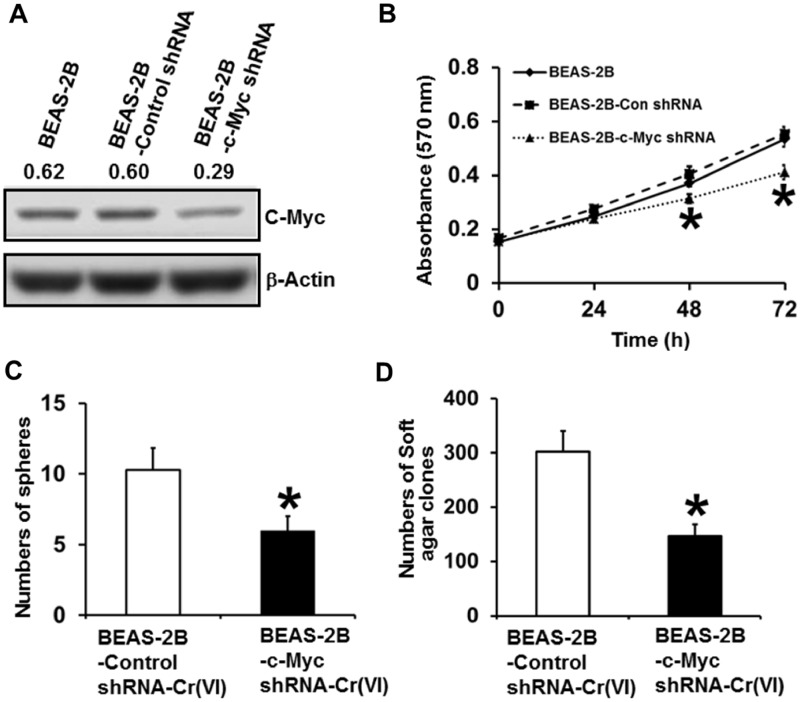Figure 2.
Stably knocking down c-Myc expression level in parental BEAS-2B cells significantly reduces chronic Cr(VI) exposure inducing CSC-like property and cell transformation. A, Western blot analysis of c-Myc expression level in parental BEAS-2B cells and parental BEAS-2B cells stably expressing a control shRNA or c-Myc knockdown shRNA. B, MTT analysis of the growth curve of parental BEAS-2B cells and parental BEAS-2B cells stably expressing a control shRNA or c-Myc knockdown shRNA. The results are presented as means ± standard deviations (n = 6). Quantitation of suspension culture sphere formation (C) and soft agar colony formation (D) by chronic low dose Cr(VI)-exposed control shRNA and c-Myc stable knockdown cells. After exposure to 0.25 µM of Cr(VI) (K2Cr2O7) for 20 weeks, control shRNA [BEAS-2B-Control shRNA-Cr(VI)] and c-Myc stable knockdown [BEAS-2B-c-Myc shRNA-Cr(VI)] cells were harvested for suspension culture spheroid formation (C) and soft agar colony formation (D) assays as described in Methods. The results are presented as means ± standard deviations (n = 3). *p < .05, compared with BEAS-2B-Control shRNA-Cr(VI) cells.

